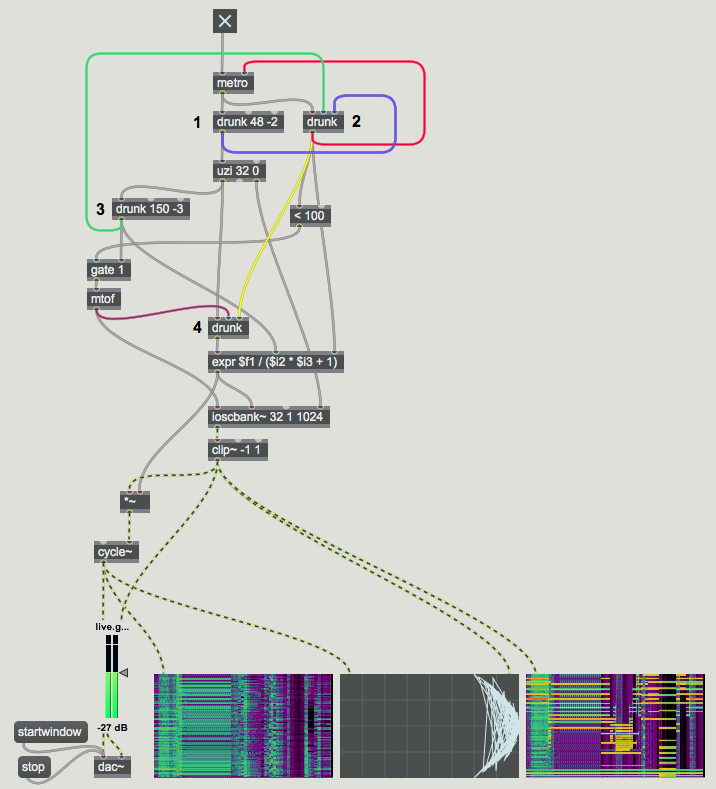Welcome to the third episode of “Easy Pieces for Max”, small patches that produce strange and/or interesting sounds (here are the rules for these pieces).
Time to make some nasty (and sometimes gentle) noise! First of all, listen to this (but don’t use headphones, I warn you!).
Noisy, eh? Believe it or not, the subpatch contains only 4 audio (MSP) objects and 10 control (Max) objects. And, as you may have noticed, it doesn’t have any parameter: it goes by itself.
As we will shortly see, all the object are rather basic (no filters, no delays, no spectral processors…): in fact they are all described in our first volume of Electronic Music and Sound Design for Max and MSP.
It is the complex interaction among the objects that creates the very peculiar sound.
Okay, enough talking, let’s take a look at the actual patch:
Probably a tad more complex than the preceding ones… let’s see how it works.
The main generator is the [ioscbank~] object that contains 32 oscillators; at each bang of the [metro] object the control part generates the data for the oscillators.
There are 4 [drunk] objects (labeled with a number in the picture), each one controlling a sound parameter:
[drunk] #1: controls the number of oscillators to update
[drunk] #2: modifies the [metro] rate
[drunk] #3: sets the pitch of the oscillators
[drunk] #4: sets the amplitude of the oscillators
Moreover each [drunk] controls other parameters to create a continuously evolving sound. As you can see [drunk] #1 controls the step parameter (third inlet) of [drunk] #2, while [drunk] #3 controls the range parameter of [drunk] #2.
The [drunk] #2 object, on the other hand, controls a gate to block or let pass the oscillators frequencies generated by [drunk] #3, and it also controls the [drunk] #4 step parameter…
It is not finished yet! because the values generated by [drunk] #3 are used, along with the values generated by [drunk] #2 to rescale the amplitudes generated by [drunk] #4; and I should also point out that the range and the step size of [drunk] #4 are controlled by [drunk] #3 and [drunk] #2 respectively…
The sound produced by [ioscbank~] is clipped and sent directly to the right channel, it is also sent (after being rescaled by the [expr] object controlled by [drunk] #4) to the phase input of a [cycle~] oscillator that is sent to the left channel.
That’s all for now. As usual, you can recreate the patch yourself, or you can download it by subscribing to the Virtual Sound Newsletter (see below) to have access to the special Bonus Page reserved for subscribers only.
If you seriously want to learn Max you can check out our book series Electronic Music and Sound Design, you will learn a lot of synthesis and audio processing techniques and have fun with Max!
And don’t forget to subscribe to the Virtual Sound Newsletter!
